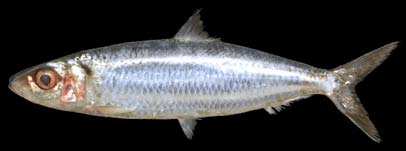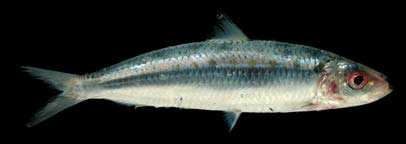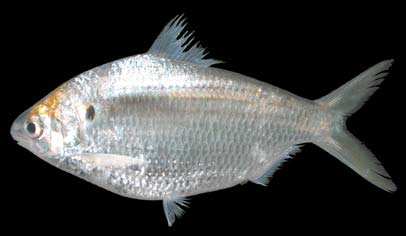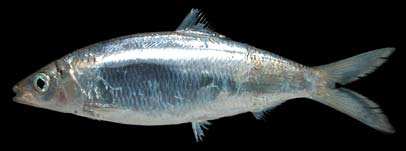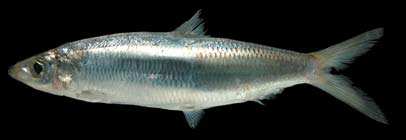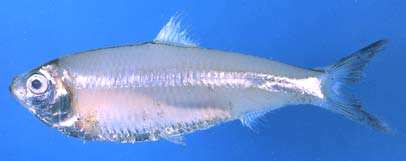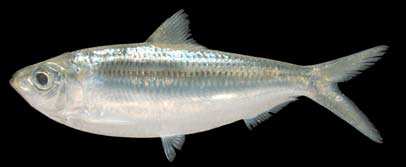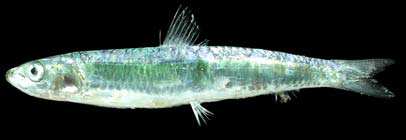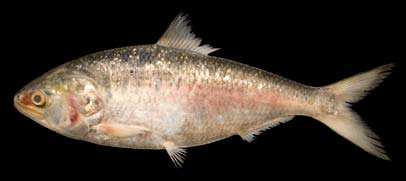CLUPEIDAE
Herrings (Sardines)
By Seishi Kimura and Tetsuo Yoshino
|
Small to medium-sized fishes (mostly 10 to 20 cm, some exceeding 50 cm) with silver-colored fusiform body, compressed or oval in crosssection. Mouth terminal or somewhat superior except for members of Dorosomatinae with mouth fully inferior; upper jaw mostly with 2 supramaxillae; jaw articulation always anterior to vertical below eye; teeth on jaws mostly absent or minute, sometimes with canines. Fins without spines; dorsal fin single, situated near midpoint of body; anal fin short less than 28 rays; pectoral fins set low on body; pelvic fins abdominal with 8 or 9 rays; caudal fin deeply forked. Body covered with cycloid scales; a series of scutes along abdomen; lateral line absent. Similar families occurring in the area. Clupeidae different from other similar families in having jaw articulation before vertical through eye, mostly 2 supramaxillae, pelvic fins inserting below short dorsal fin, short anal fin less than 28 rays, a series of scutes along abdomen, and no lateral line. Elopidae: lateral line present; no abdominal scutes; gular plate present; numerous branchiostegal rays (more than 20). Megalopidae: lateral line present, no abdominal scutes; gular plate present; numerous branchiostegal rays (more than 20). Albulidae: lateral line present; no abdominal scutes; gular plate present. Chirocentridae: body highly compressed and elongate; no abdominal scutes; jaws with developed fang-like canine teeth. Pristigasteridae: pelvic fins inserting anterior to vertical through dorsal fin origin; anal fin long more than 30 rays. Engraulidae: snout pig-like and projecting; jaw articulation well behind eye. Chanidae: lateral line present; no abdominal scutes; branchiostegal rays few (4 or 5). Remarks. Schooling fishes found in marine coastal areas, mostly feeding on small planktonic animals and plants. Small but important food fishes used as fresh, dried, or salted ones, taken by beach seine and other variety of nets. Regionally some species have great contribution to local catches. |

|
|
